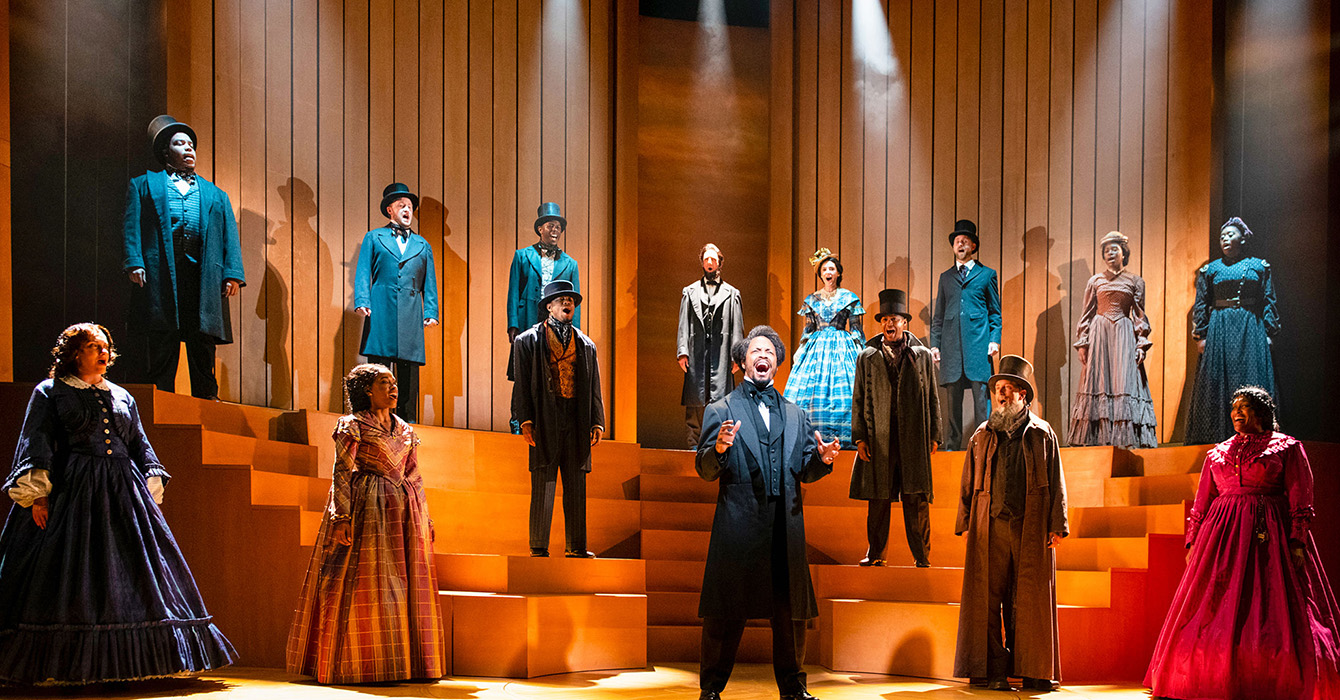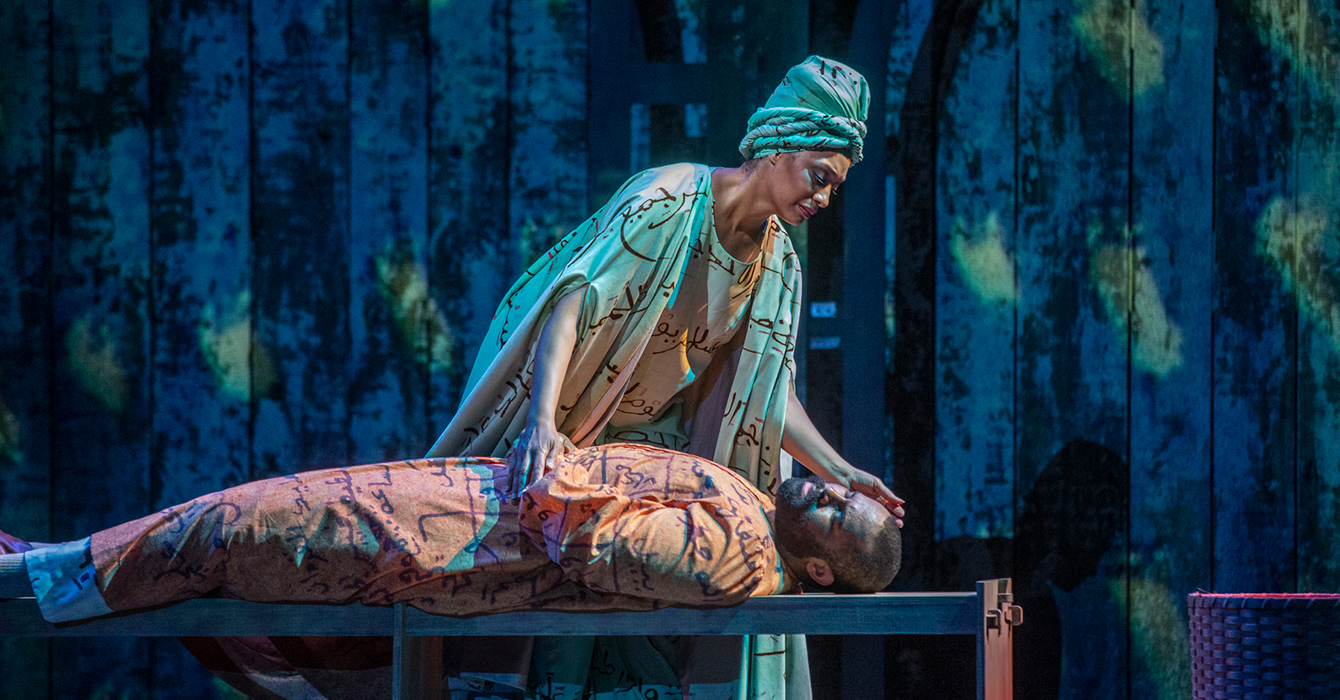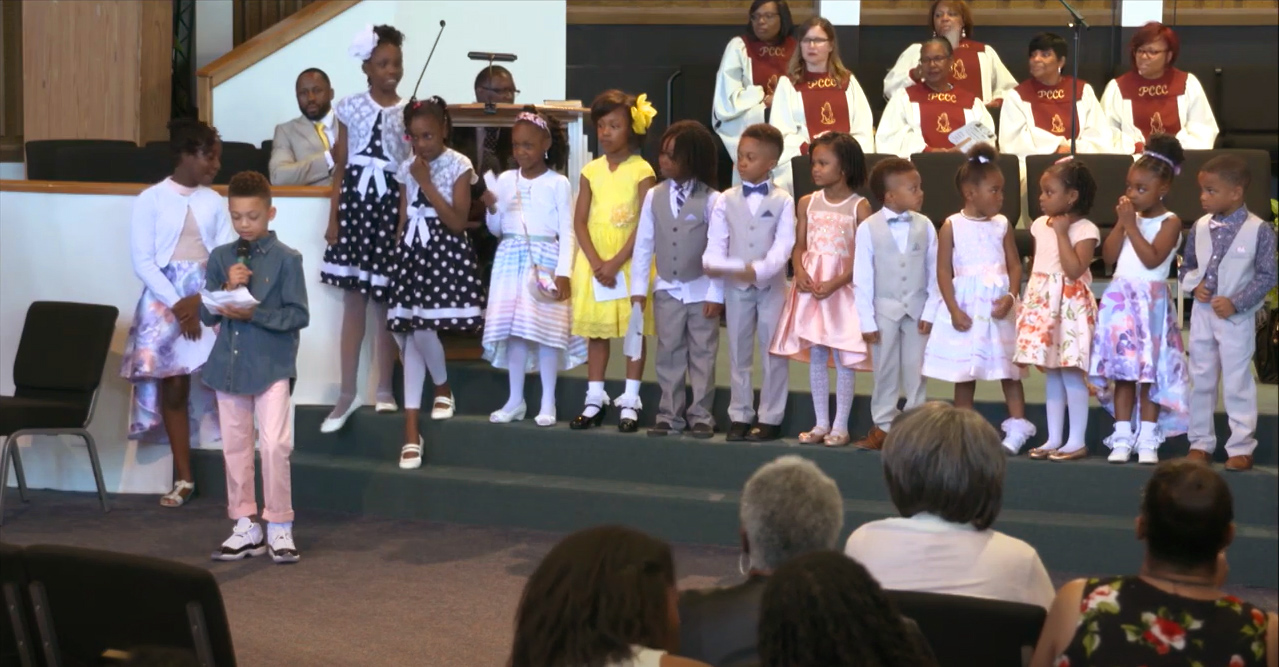Late afternoon on a beautiful Saturday in May, hundreds of opera fans from across St. Louis, the Midwest and -- in a few cases -- the country converged on the campus of Webster University in the affluent St. Louis suburb of Webster Groves.
Many of them gathered around cheerful outdoor tables, picnicking in the grassy gardens. But the main attraction, their real destination, was the school’s Loretto-Hilton Center for the Performing Arts, where at 8 p.m. the Opera Theatre of Saint Louis would raise the curtain on its 40th season. Running until late June, with four major productions in rotating repertory, the season opened with a performance of Rossini’s “Barber of Seville.”
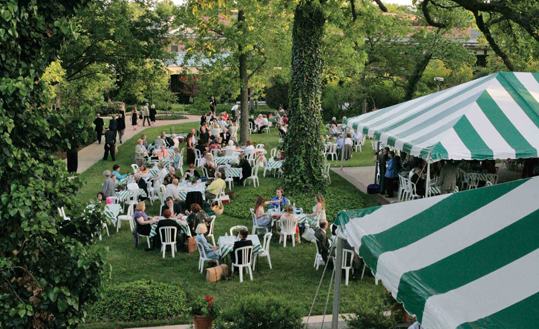
This was no ordinary take on the classic Italian comic opera, first performed in 1816 and typically set in the late 18th century. Instead, the St. Louis version was, as a critic for the St. Louis Post-Dispatch described it, “an absurdist update to Spain,” set in an era vaguely reminiscent of the late 1950s to mid-1960s.
Why it matters
Opera, like church, is an institution that's struggling with declining support and an aging audience. Read how the Opera Theatre of Saint Louis is experimenting to engage the community and attract younger fans.
No specific period was intended, the company’s general director, Timothy O’Leary, explained in an interview with the paper, just “a stylized 20th century context, B.C. -- before cellphones.” With scenery and costumes bursting with color, the production was inspired in part by the films of Spanish director Pedro Almodóvar. And as with all the theater’s productions, the libretto was sung in English.
A major cultural institution, part of a tradition going back 400 years, opera struggles today in many places with an aging audience and declining support. But in St. Louis, opera is thriving, both artistically and financially. Using a variety of creative and innovative approaches, Opera Theatre of Saint Louis is performing excellent opera, building community support, and drawing in younger fans, making the art form more accessible while being faithful to a broader artistic tradition.
The small, intimate theater on the Webster campus, which seats about 1,000, is often filled to capacity for the opera company’s performances. Opera Theatre of Saint Louis boasts a subscription renewal rate of close to 90 percent. And the company has yet to accumulate a deficit.
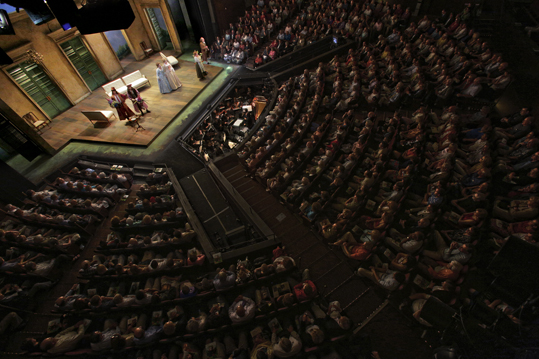
Opera struggles
Elsewhere in the opera world, the picture is often not so bright. According to statistics from New York-based Opera America, attendance at big opera companies has declined in the last five years. In 2013, the subscription renewal rate averaged 74 percent -- significantly below that of the St. Louis opera.
Some blame the Great Recession for the opera world’s woes. Others point to the overwhelming variety of competing art forms. And opera is very expensive to produce and stage. High ticket prices and an elitist reputation keep many would-be fans away.
“Opera is a hard sell for the general public,” said David Ward, the director of the Opera Theater at the University of Arizona. “A lot of times, I feel like a museum curator.”
There are plenty of cautionary tales.
Opera Pacific, in Santa Ana, California, closed in 2008. Some argued that the opera company failed to establish strong community roots. Five years later, New York City Opera, O’Leary’s former employer, announced that it, too, would shutter its doors after serving for 70 years as an alternative to the Metropolitan Opera.
And even the famed Metropolitan Opera -- “the Met” -- is said to be facing its own financial woes, fighting to decrease a $2.8 million operating deficit amid costly productions, labor disputes and bad reviews.
Yet despite the closings and money troubles, signs suggest that the public still wants and needs opera. The San Diego Opera, for example, was on the verge of shutting down last year but survived in part because it managed to raise $2.1 million in a crowdfunding campaign.
Opera in English
Founded in 1976, Opera Theatre of Saint Louis was modeled after Santa Fe Opera, a successful company with a long tradition of producing the classics alongside new works. Like the Santa Fe company, Opera Theatre of Saint Louis is a summer festival that draws fans from a wide distance.
What sets St. Louis apart from other major opera companies is its mandate to present opera in English, a custom that goes back to the company’s beginning. Internationally, some opera purists consider opera in translation provincial, but the St. Louis opera dismisses those concerns.
O’Leary argues that opera has always translated pieces into the language of the public.
Does the Christian message, even in English, face issues of translation? How well does your church speak the “language of the public”?
“Once you’re in our theater, [our] performing in the language of the audience means that the art form gets to do what it’s supposed to do, which is that the music is working on your emotional inner life,” O’Leary said.
Rather than scanning back and forth between the stage and a screen where English subtitles scroll by -- sometimes at precisely the right moment, sometimes not -- the St. Louis opera’s audience can hear and understand the meaning of the lyrics simultaneously.
“You’re hearing the words and getting all the power of this music at the same time, and there’s no escaping,” O’Leary said.
Joe Gfaller, the director of marketing and public relations for the St. Louis opera, said that many of the company’s approaches that seem different and innovative are actually consistent with or even a return to the roots of opera. Singing operas in the audience’s language and performing in small venues are not new developments but typical features of 19th-century opera, he said.
“Opera was the most popular form of entertainment that there was,” Gfaller said.
Performing opera only in the language in which it was written is a late-19th-century development, and large opera houses, such as the 3,800-seat Met, a 20th-century invention, he said.
With only 987 seats and a stage that projects into the audience, the St. Louis opera’s venue is more intimate than the large houses, bringing the audience much closer to the action. In St. Louis, 94 percent of the seats are closer to the center of the stage than the front row is at the Met.
Overcoming barriers, pushing boundaries
But language and distance are not the only barriers that Opera Theatre of Saint Louis works to overcome. The company is constantly pushing artistic boundaries and stepping out of its comfort zone.
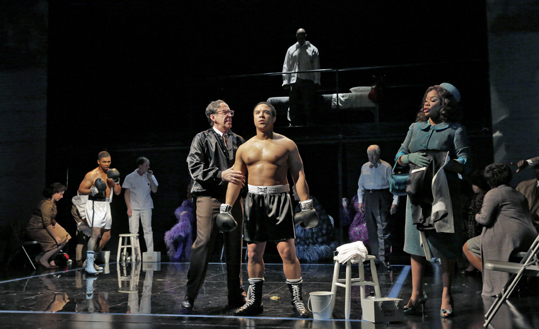
The theater has twice enlisted famed fashion designer Isaac Mizrahi to design and direct classics like Mozart’s “The Magic Flute.” And as part of its “New Works, Bold Voices” series, it hosted the world premiere of “Champion” in 2013, an opera in jazz written by trumpeter Terence Blanchard about the gay African-American boxer Emile Griffith.
“Champion” was wildly successful, O’Leary said, attracting a new, diverse audience to the theater. Next year, the company plans to present the world premiere of “Shalimar the Clown,” based on the novel by Salman Rushdie.
What boundaries does your church need to push to overcome stereotypes about church?
Josh Shaw, co-founder of Pacific Opera Project, a small, innovative company in Los Angeles, said companies that push boundaries help defeat stereotypes about opera. Too often, Shaw said, the public still thinks of opera as “the fat lady singing” or as art intended for elite audiences only.
Attempts to attract a new fan base seem to have paid off for Opera Theatre of Saint Louis. According to its latest annual report, the number of new donors in fiscal year 2014 increased by 203 percent over the prior year.
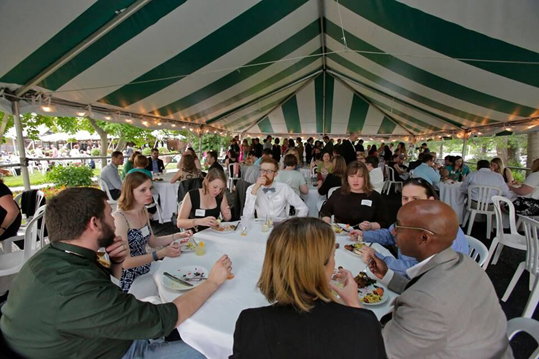
Efforts to expand the fan base include several programs designed to attract younger generations.
The Young Friends program, launched seven years ago, is aimed at people 45 and under. Patrons attending a Young Friends Night event mingle before the performance while feasting on a buffet dinner. Tickets are only $49.
As those people become opera fans, they in turn spread the enthusiasm to others, recruiting even more new fans. A 30-member Young Friends steering committee serves as an advocate for the company and for opera, helping to create a network of people who are inspired and empowered to reach others, Gfaller said.
Would you call what the Young Friends Steering Committee does "evangelism?" How can your church be a network of people inspired and empowered to reach others?
In 2013, the opera, like many other performing arts organizations, launched a Tweet Seats program, in which active Twitter users can apply to receive complimentary tickets for select performances and share their experience by tweeting from their smartphones during the event.
And after every performance, the entire audience is invited to stay for “cocktails under the starlight,” where they can meet some of the key artists in the evening’s production.

Part of the community
More than just trying to recruit new fans, Opera Theatre of Saint Louis has worked hard to make itself an integral part of the St. Louis community. The company’s 2011 presentation of “The Death of Klinghoffer,” an American opera based on the 1985 hijacking of the Italian cruise ship Achille Lauro by the Palestinian Liberation Front, is an example of why the company has thrived.
The opera depicts the hijackers’ murder of Leon Klinghoffer, a 69-year-old disabled Jew. The elderly tourist was celebrating his wedding anniversary on the ship when the hijackers shot him and dumped him overboard in his wheelchair.
“It’s a story of incredible senseless violence, but at the same time, it’s actually also … about the common humanity of all people, ordinary people of all religions and nationalities, and that’s what makes it such ambitious work,” O’Leary said.
Since its 1991 premiere in Brussels, claims of anti-Semitism followed the opera’s production. So before introducing it to St. Louis, O’Leary formed a 12-member interfaith steering committee that developed educational materials and events centered on the opera.
A panel discussion at the Ethical Society of St. Louis, a Humanist congregation, for example, featured three religious leaders, one Jewish, one Christian and one Muslim. And a teen Jewish/Muslim dialogue group sponsored by the Jewish Community Relations Council of St. Louis programmed special activities and follow-up discussions related to the opera.

“When people have this opportunity to connect across differences, and when the lens is an artistic lens, not a political lens, … I honestly think that people can be their best selves,” O’Leary said.
Unlike the St. Louis production, the Metropolitan Opera’s staging of “Klinghoffer” last year proved hugely controversial. Both inside and outside the opera house, artists and fans met with protesters.
Opera Theatre of Saint Louis also confronted the racial tensions in the region after the killing of African-American teenager Michael Brown by a white police officer in the suburb of Ferguson last year. The theater company helped organize a concert at the school Brown had attended, Normandy High.
The performers included a mixture of established stars, students, amateurs and church choirs. Co-hosted as well by Jazz St. Louis, a nonprofit that builds youth and adult audiences for jazz, Arts & Faith St. Louis, an interfaith group that builds relationships between the arts and local faith communities, and other groups, the concert raised money for the school’s Friends of Normandy Scholarship Foundation, which awards funds each year to seniors headed to college or technical school.
In many ways, literally and figuratively, Opera Theatre of Saint Louis doesn’t perform just for the public but with the public.
In May, the theater celebrated its second annual “Spring Sing,” bringing together the company’s singers with hundreds of local voices for a community concert. There were no auditions; just one rehearsal was all that was required to stand and sing with the professionals beneath the iconic “Spirit of St. Louis” replica in the Grand Hall of the Missouri History Museum.
And later this year, the opera will launch the pilot phase of its new Voices of Faith program, in which professional singers will sing with church choirs.
Whether through performances or workshops or recruiting new fans, opera and Opera Theatre of Saint Louis are about connecting people and community.
It’s about connecting through art, O’Leary said, and “understanding our common humanity.”
Questions to consider
Questions to Consider
- To what extent does the Christian message, even in English, face issues of translation? How well does your church speak the “language of the public”?
- What models from the early church, from the roots of Christianity, might be useful innovations in your church’s current context?
- What are the most troublesome stereotypes about church? To what extent are they true of your congregation? What boundaries does your church need to push to overcome them?
- In what ways is the Young Friends steering committee “evangelism”? How can your church be “a network of people who are inspired and empowered to reach others?
- What are your community’s most pressing issues? What role can your church play in addressing them?
- In what ways does your church “perform” for the public? In what ways, with the public? What’s the right balance between the two?



